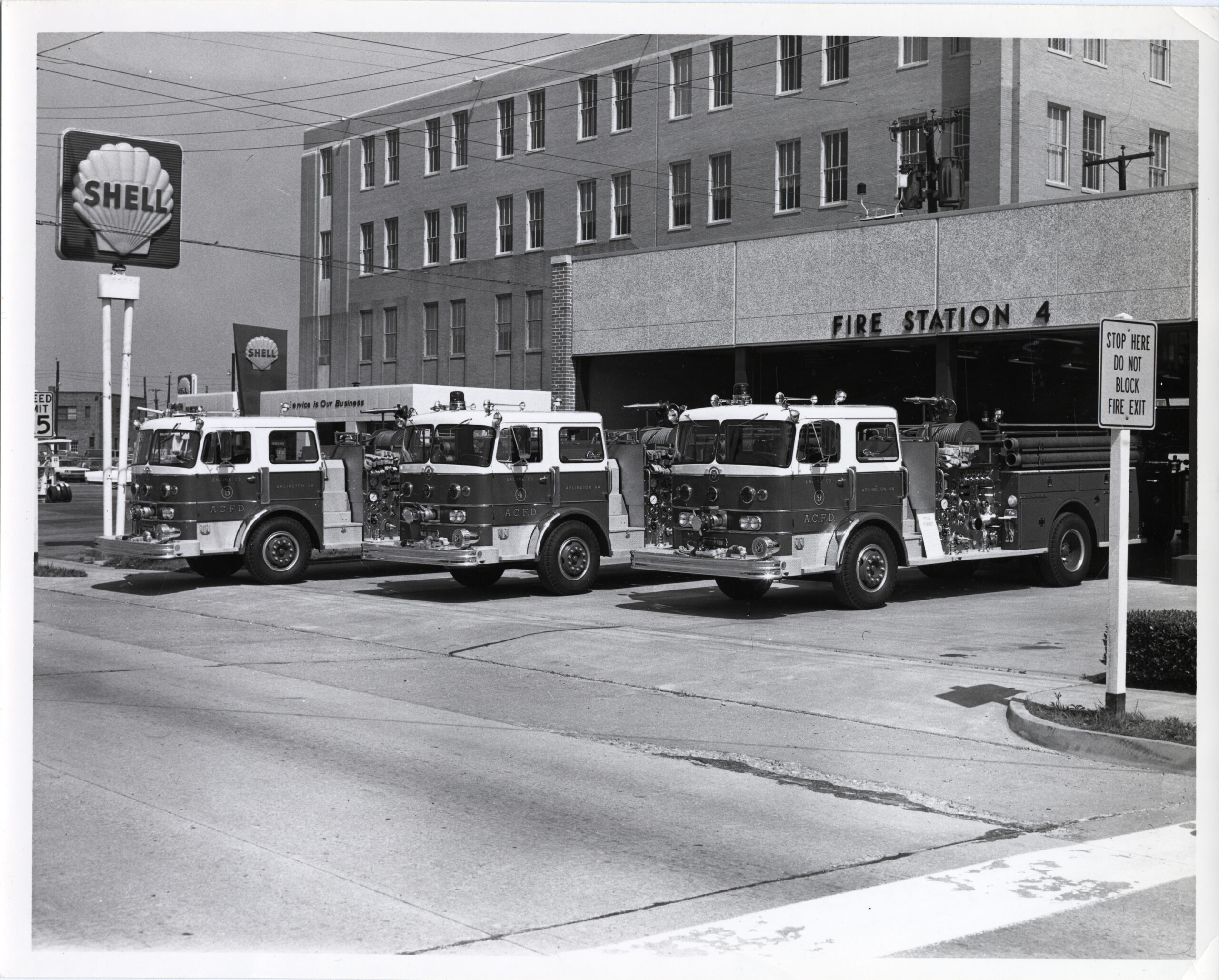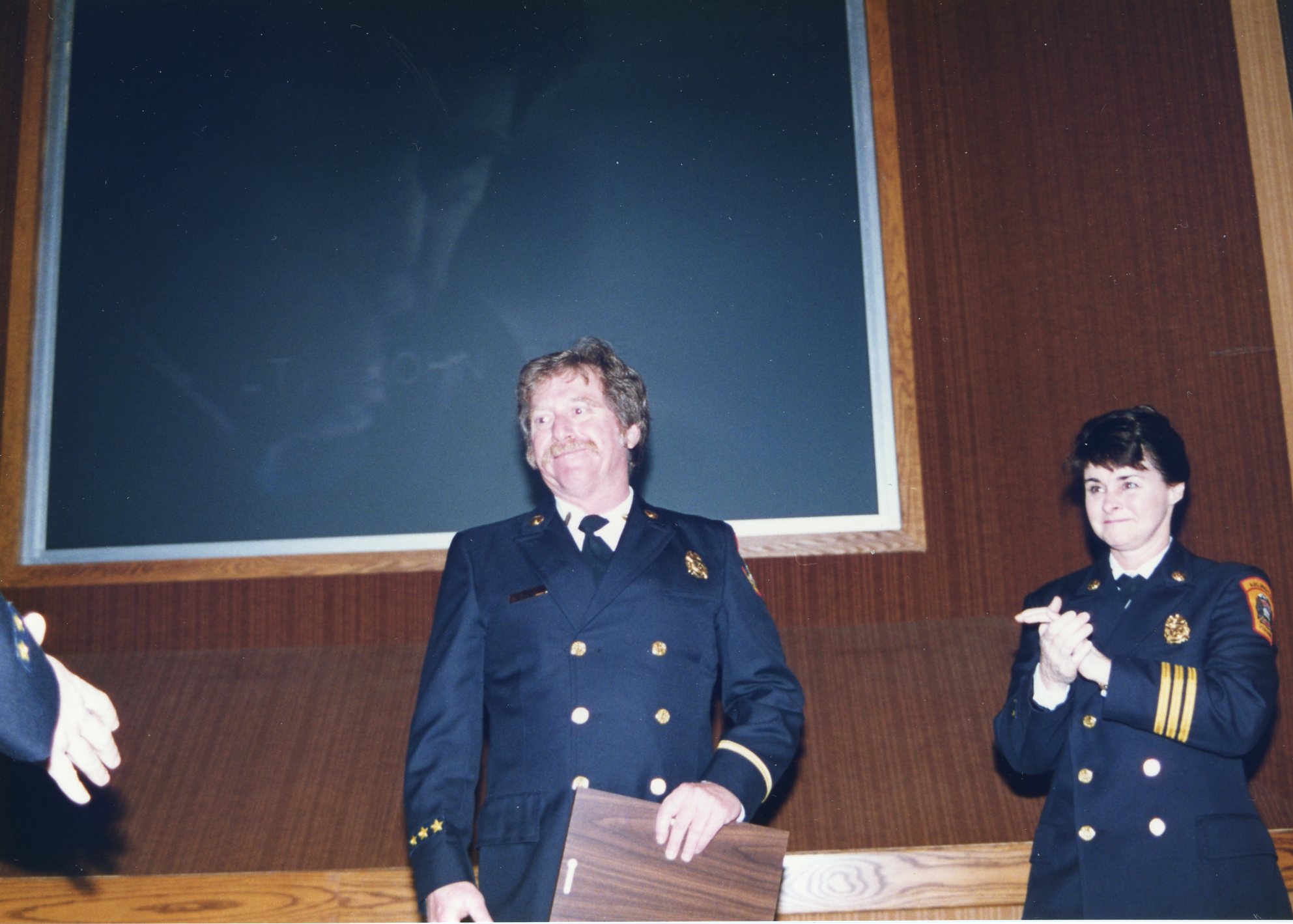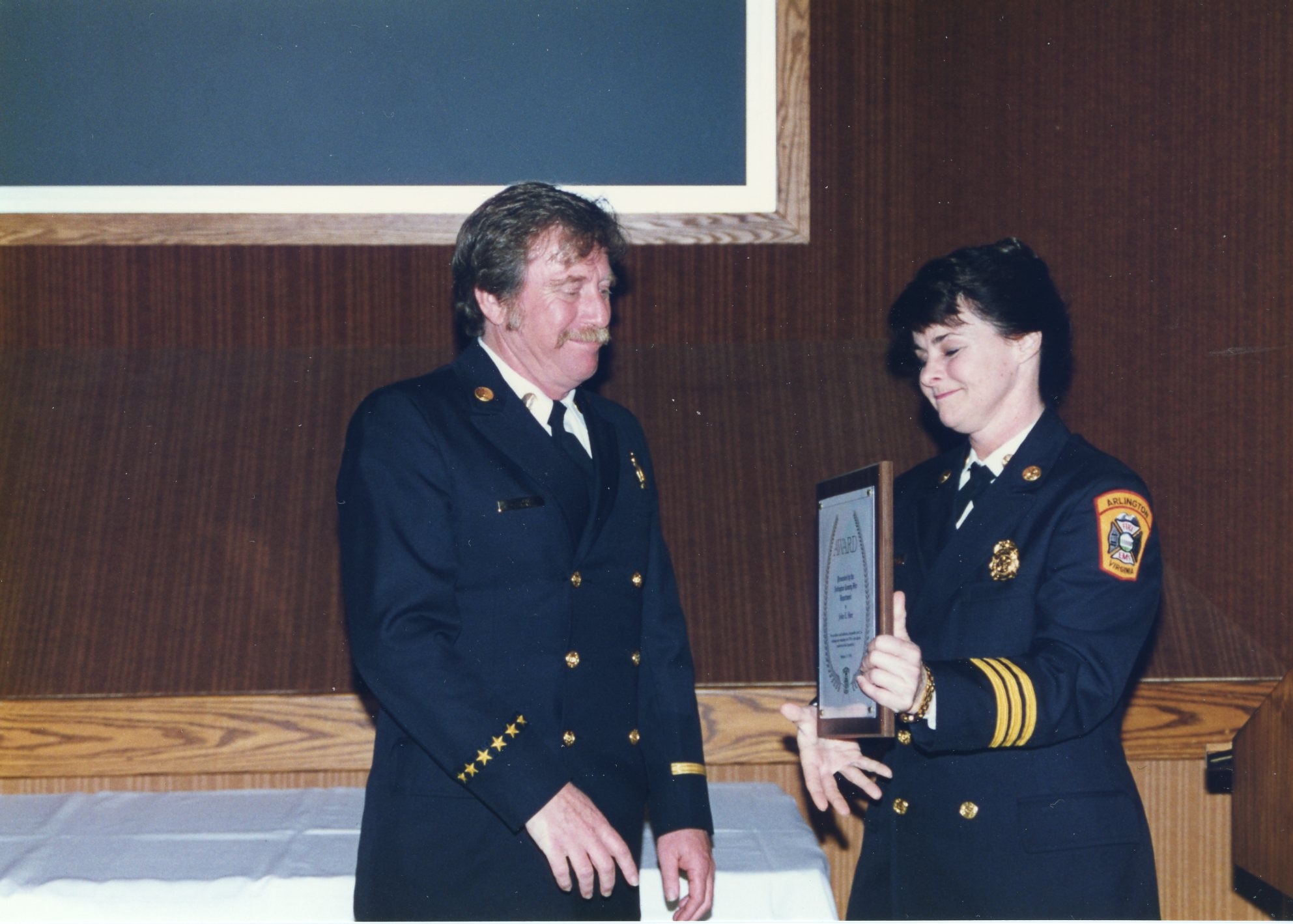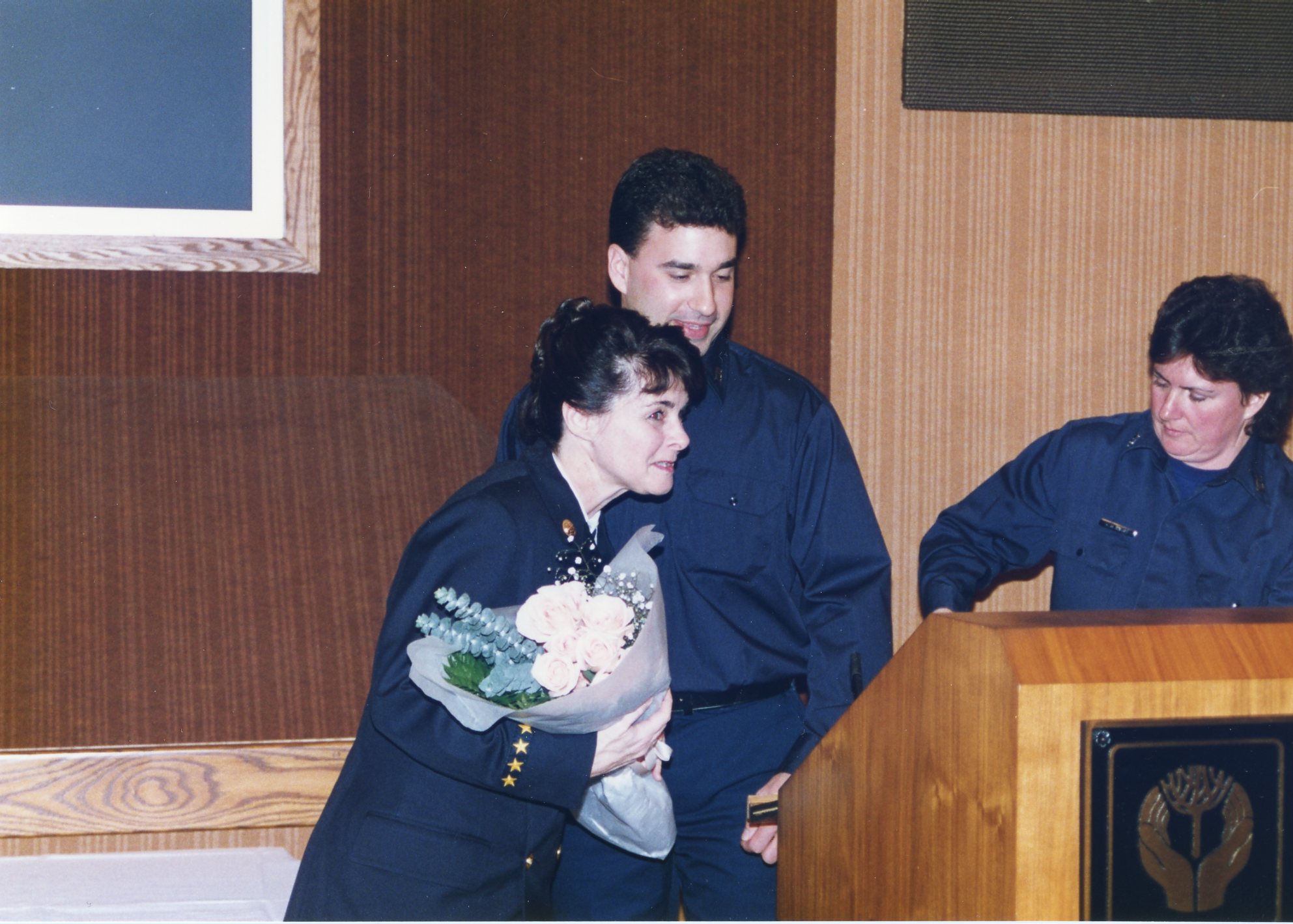Arlington's First Female Fire Fighter
Did you know that Arlington is believed to be home to the first full-time career female firefighter in the United States? Judith Brewer, then Judith Livers, was hired in 1974 at Clarendon Station #4, serving 15 years before retiring as one of the first female battalion chiefs in the country.
After working briefly as a beautician, Brewer became interested in firefighting while helping her then husband study for his fire science degree. She was particularly moved by images of children who were injured in fires.
Judith Brewer, Photo Courtesy of Arlington Fire Journal
Brewer began the qualification course to become an emergency technician, with the goal of riding in ambulances to assist firefighters. After becoming certified, she taught the 100 hour course to volunteer and professional firemen at Northern Virginia Community College.
When she applied to her husband’s volunteer unit in Mt. Vernon, she was rejected twice. “That made me angry. So I said to heck with the volunteers and I talked to Tom about becoming a professional firefighter” (Washington Star-News 7/28/74)
Getting Hired
The process for a woman to become a firefighter was not an easy one in the 1970s. Women had only been hired as secretaries or to do other clerical duties at firehouses, and many firemen did not believe that it was possible for a woman to do the job.
Clarendon Station #4, 1969, CLH Collections
Brewer was hired in 1974 at Arlington’s Clarendon Station #4 by Fire Chief Robert Groshon. Although her initial goal was to stay on the rescue squad, she quickly fell in love with firefighting and began her training to become a full time firefighter.
After passing the required book tests, her first challenge was the grueling physical tests. This included climbing a 50 foot ladder, holding a hose steady for 2 minutes while 100 pounds of pressure pumped through it, finding her way through a smoke filled building blindfolded while wearing all her gear, and moving a 100 pound sandbag 50 times in 10 minutes. Brewer initially failed the physical test, due to not meeting the time limit moving sandbags. But instead of giving up, she built a training course at home and practiced for three months in order to retake and pass the physical test.
Resistance from Men
Despite Brewer having proven herself strong enough to pass both the physical and mental tests required to become a firefighter, men were still resistant to allowing her in the department. One firefighter said, “It is not a woman’s job…physically a woman cannot handle it. When I took this job I didn’t think I’d have to work with minorities and women and things like that.”
Much of the opposition towards Brewer was based on sexist ideology that was built into the environment. As Sarah Vee Moseley explains in "Women’s Entrance Into the Fire Department: A Theory of Collaboration and Crisis,"
Just three weeks after Brewer was hired, the Arlington Professional Firefighters Association and the Ladies Auxiliary took an official stance against hiring more women firefighters. The President of the Firefighters Association, William Hartman, explained that, “The biggest problem is that the men want separate bedrooms and toilet facilities for women firefighters…their wives aren’t at all happy that their husbands are sharing a bedroom with a woman, even in a dormitory style fire station.” (The Arlington News 3/21/74)
Brewer, Photo Courtesy of Arlington Fire Department
Resistance from Firefighter Wives
The women involved at Clarendon Station #4 were particularly against the idea of a female firefighter. Brewer remembered, “The wives are extremely upset… One of them confronted me in the kitchen one night when I turned around and said something to her husband. She screamed at me and told me not to talk to her husband… A few of the women think it’s immoral and possibly illegal for me to share the same bunk room as the men…They’ve gone to the County Manager and circulated petitions. They say they’ll go to court in order to keep women from bunking with their husbands"
In addition to the sleeping arrangements, the wives claimed that increased press surrounding Brewer was interfering with firefighter’s daily duties. Firemen were harassed for interviews around the firehouse, with some men complaining that being watched like a “fish in a fishbowl” only added to the tensions. Some reporters took it a step further, and in an attempt to cover Brewer’s story, “Television camera crews and reporters swarmed over the firehouse…at one point followed them onto their trucks screaming, ‘Can we go?’ when a fire call came in during an interview” (Washington Post 4/3/74).
Progress and Promotions
Even if they held onto their sexist ideology, some men felt that, “I just ain’t used to having a female here…but you got to give somebody a chance. If it works out, fine. I’ll give Judy and any other girl who comes on a chance because I think it took a helluva woman to apply for this job” In 1974, just months after Brewer was hired, 6 women joined the San Diego, California Fire Department and one woman joined Alexandria, Virginia.
Once Brewer proved herself in the field, she slowly became accepted as part of the culture. In an interview with the Washington Star Journal 3 months after she was hired, her Captain Lou Galleno said, “She’s a very determined person. Within a month and a half she was capable of tilling (controlling the back wheels of the firetruck) fire calls. I took her out six times and then I broke her loose. If she had come here to make a joke of my job…I wouldn’t have wanted any part of her. But she wanted to be a firefighter.”
According to Brewer, it took 6 months for the men to stop treating her as an oddity, and another 2 years before the men stopped watching her every move on calls. While Brewer’s hiring was part of a wave of women joining Fire Departments all across the Country, another woman would not be hired in Arlington for 6 years.
Brewer c. 1995, CLH Collections
In 1988, Brewer was promoted to Captain, and finally given her own bedroom and bathroom facilities. Two years later she was promoted to the rank of Battalion Chief, one of the few women to hold the position in the country at the time. Brewer held the rank of Battalion Chief until her retirement in 1995, and was in charge of 6 fire stations across Arlington including Clarendon Station #4, where she got her start.
Arlington Women in Firefighting Today
As of 2017 there were 29 women firefighters/EMS working in Arlington. In 2013, Arlington County started “Camp Heat,'' a five day summer camp experience created to inspire more young women to join Arlington’s Fire and Emergency Medical Services. Campers have the chance to meet female leaders in the department, participate in training, and experience the everyday life of a firefighter. Today Camp Heat is open to anyone under the age of 18.
Campers watch a staged fire at Camp Heat, 2013, Photo Courtesy of NPR
Help Build Arlington's Community History
The Center for Local History (CLH) collects, preserves, and shares resources that illustrate Arlington County’s history, diversity and communities. Learn how you can play an active role in documenting Arlington's history by donating physical and/or digital materials for the Center for Local History’s permanent collection.
Do you have a question about this story, or a personal experience to share?
Use this form to send a message to the Center for Local History.
Center For Local History - Blog Post Message Form
Do you have a question about this story, or a personal experience to share? Use this form to send a message to the Center for Local History.
"*" indicates required fields






